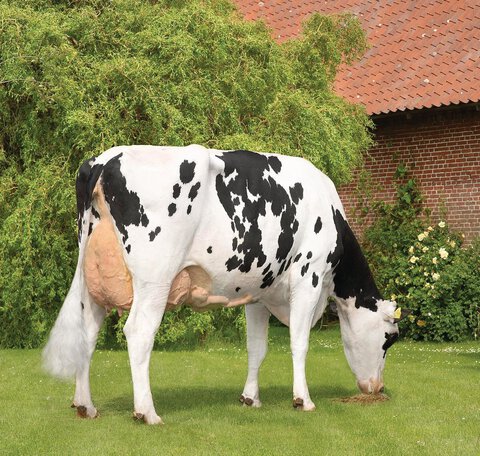With its high production levels the Holstein cow has become the breed of choice for many farmers around the world. However, the breed does have its issues that farmers can address with some simple steps.

18 Nov 2022
With its high production levels the Holstein cow has become the breed of choice for many farmers around the world. However, the breed does have its issues that farmers can address with some simple steps.
Holstein Friesian cows are the dominant breed in over 150 countries around the world but that does not mean they are problem-free. Some farmers may struggle with cows that are too big, that present fertility issues or face increased welfare concerns. However, there are steps you can take to futureproof the Holstein breed.
With its high production levels the Holstein cow has become the breed of choice for many farmers around the world. However, the breed does have its issues that farmers can address with some simple steps.
Today, Holstein cows give 3 kgs more milk per day than they did just five years ago, thanks to advances in breeding, but that comes at a cost.
This extra yield can mean the cow is actually having trouble keeping healthy, keeping fertile and so on. Another issue is that since the cow is high in production, Holstein cows have become too extreme in stature.
Other challenges that Holstein farmers face are being driven by consumers, retailers and new regulations that are constantly coming into force at the moment, particularly with regards to health and welfare, efficiency and sustainability.
This consumer interest is forcing new legislation to be drawn up with regards to withdrawing calves from mothers and also from demands not to dehorn animals.
Matthew Stott, UK country manager with VikingGenetics comments: “We're going to see an increase in polled genetics as we move forward as well, which is certainly the case already in some countries.
The sustainability side is also growing rapidly. And I do know that one of the main milk processors now is looking very hard at methane emissions on individual farms and looking to drive that down.”
UK farmers are helping address some of these issues by using sexed semen to reduce the number of bull calves. The use of sexed semen is now at 65 percent of the dairy semen that's being used, and that's grown 15 percent since 2020.
From a genetic point of view there are several tools farmers can bring to farm level for a more efficient production. These include using the Saved Feed Index of sires to reduce feed costs.
Crossbreeding is another tool Holstein farmers can use to improve the herd.
Hanna Driscoll, senior breeding manager for VikingHolstein, say: “Of course, we do improve the purebred animals. From a breeding perspective, we improve them in terms of fertility and metabolic disorders, both of which are everyday struggles in the life of the farmer.
But one addition to that on a herd level is to do crossbreeding, especially on those traits where you get the hybrid vigour working very effectively on fertility and so on.”
ProCROSS is a 3-breed rotational crossbreeding system, combining VikingHolstein, VikingRed and Coopex Montbéliarde, which is suitable for herds adopting intensive production.
VikingGoldenCross is a 3-breed rotational crossbreeding programme, combining VikingHolstein, VikingRed and VikingJersey, which is especially suitable for seasonal calving herds.
Going forward, dairy farms are becoming bigger but need to focus on efficiency, animal welfare, cow longevity and health if they are going to be sustainable.
Well-managed herds built on good genetics leave the smallest footprint on the environment. For example, across the UK, the average herd size is growing, but the number of dairy cows are decreasing. Holstein will still dominate but it has to be efficient and profitable and that comes from better breeding.




